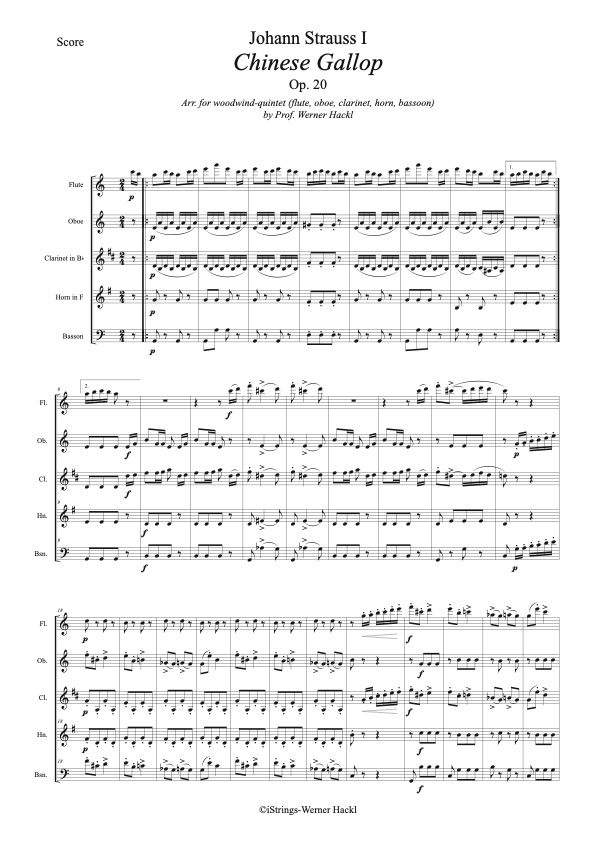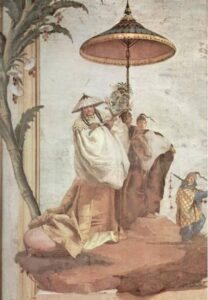Johann Strauss I (1804-1849) Chineser Galopp / Chinese Gallop, op. 20

Bei der Galoppade umfassten sich die Tanzenden ursprünglich nur mit einem Arm und schritten vorwärts, stets mit einem Fuß, den anderen nachziehend, wobei von Zeit zu Zeit der vorschrei- tende Fuß und der umfassende Arm gewechselt wurde. Später wurde Tempo und Geschwindig- keit bis zur Raserei gesteigert. Früher wurde der Galopp als Abschluss eines Contre danse ge- tanzt. Der Tanz bildete oft den Kehraus am Ende eines Balls. In Wien ist der Galopp seit 1803 be- kannt und zählte zu den beliebtesten Tänzen. Er bestand nun aus einem schnellen seitlichen Ga- loppieren in eine Richtung und ersetzte den wenige Jahre zuvor von den Behörden als „gesund- heitsschädlich“ untersagten „Langaus“. Ab 1830 wurde der Galopp zusehends von der Schnell- polka als Modetanz abgelöst. Um 1840 beschloss Johann Strauss Vater, keinen Galopp mehr zu schreiben. Der ländliche Galopp behielt fast ausnahmslos die alte, nach einer Richtung hin galop- pierende Rutscherform bei. Heute wird der Galopp vor allem auf Bällen in Österreich und Süd- deutschland getanzt, auch im Volkstanz ist er noch lebendig.
Der „Chineser-Galopp“ wird erstmals in der Wiener Zeitung Nr. 288 vom 15.12.1828 angekündigt.

During the gallop, the dancers originally only embraced each other with one arm and stepped for- ward, always with one foot, dragging the other, with the advancing foot and the encircling arm be- ing changed from time to time. Later the pace and speed were increased to the point of frenzy. In the past, the gallop was danced at the end of a contre danse. The dance was often the sweep- stakes at the end of a ball. The gallop has been known in Vienna since 1803 and is one of the most popular dances. It now consisted of a quick sideways gallop in one direction and replaced the “Langaus”, which the authorities had banned a few years earlier as being “harmful to health”. From 1830 the gallop was increasingly replaced by the fast polka as a fashion dance. Around 1840, Jo- hann Strauss’ father decided not to write a gallop any more. The rural gallop almost without excep- tion retained the old slide shape, galloping in one direction. Today the gallop is danced mainly on balls in Austria and southern Germany, and it is still alive in folk dance.
The “Chinese gallop” is announced for the first time in the Viennese newspaper No. 288 of De- cember 15, 1828.
| sound sample / Tonbeispiel | score/parts PDF download: € 15,- | add to cart / in den Warenkorb |
